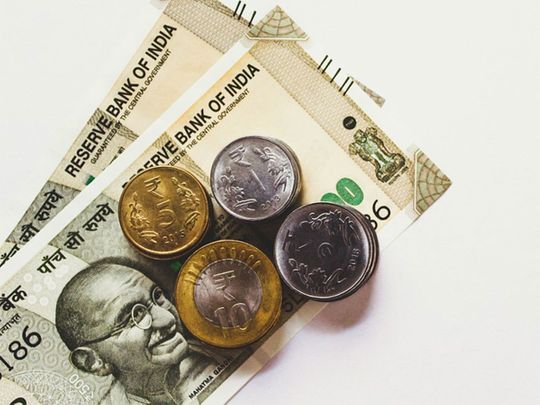Dubai, UAE – The Indian rupee opened marginally higher on Wednesday against both the US dollar and the UAE dirham. This increase follows a decline in US Treasury yields, which is drawing attention ahead of key US inflation data that could influence the Federal Reserve’s interest rate decisions for the year.
As of 9:00 am UAE time, the Indian rupee was trading at 83.4775 to the US dollar (22.75 against the UAE dirham), a slight improvement from the previous session’s 83.52 (22.76). This movement suggests cautious optimism among traders, possibly influenced by actions from the Reserve Bank of India (RBI) to stabilize the currency.
RBI’s Role in Stabilizing the Rupee
Market participants suspect that the RBI has been intervening in the forex market by offering dollars to prevent the rupee from depreciating to its all-time low of 83.5750. A forex trader commented on the situation, indicating that the RBI’s actions are making it difficult for the USD/INR rate to rise beyond 83.50, while also noting the lack of significant dips in the currency pair.
US Treasury Yields and Inflation Data
The 10-year US Treasury yield has decreased to 4.44%, and the dollar index has dropped below 105, setting the stage for the upcoming US consumer inflation data release. Economists surveyed by Reuters predict a 0.3% month-on-month increase in the core consumer price index for April.
READ:Stargazers in Dubai to Witness the Majestic Flower Moon on May 22
Market Reactions and Expectations
US equities saw gains on Tuesday, with futures on the S&P 500 Index rising in Asia. Data released ahead of the consumer inflation report showed that US producer prices increased more than expected in April. However, March’s figures were revised downwards, showing a 0.1% decline instead of the initially reported 0.2% increase.
Fed Chair Jerome Powell described the April producer prices report as “mixed” rather than “hot,” citing the downward revision of previous data against the higher-than-expected April figures.
ING Bank commented on the forthcoming US consumer inflation figures, noting that they will indicate whether the US is progressing in its disinflation efforts or if inflation remains persistently high, which would deter the Federal Reserve from cutting rates. ING suggested that persistent inflation is the more likely scenario.
Conclusion
The slight appreciation of the Indian rupee against the US dollar and UAE dirham reflects market responses to global economic indicators and anticipations of central bank policies. Traders and investors will closely monitor the US inflation data for further cues on the Federal Reserve’s future actions, which will, in turn, influence the Indian rupee’s performance.




